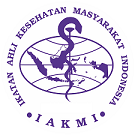Metrics from a Congenital Hypothyroidism Screening Program – A Tale of Unmet Challenges
DOI:
https://doi.org/10.26911/thejmch.2025.01.01.02Abstract
Background: Congenital hypothyroidism is one of the most common Inherited Metabolic Diseases for which newborn screening is recommended. A wide-scale program for this is lacking in our country.
We undertook a study to retrospectively review our metrics from a regional project for newborn screening of Congenital Hypothyroidism including frequency of elevated neonatal Thyroid Stimulating Hormone (TSH), recall rate, rate of missed testing and turnaround time for results.
Subjects and Method: Retrospective data of neonates born between 13th July 2020 and 10th August 2021 was collected from electronic medical records. Dried blood spot specimens for TSH were collected from the umbilical cords for neonates born vaginally and by heel prick for those born by caesarian section and sent to the designated laboratory. Data was entered on Microsoft Excel and analyzed.
Results: 4037 babies were screened for neonatal TSH, 2149 males and 1888 females. The median (IQR) TSH level was 3.34 (2.09-5.30) µIU/mL. The TSH levels of ≥15 µIU/mL were noted in 95 newborns, out of which 31 newborns had values of ≥ 20 µIU/mL. There was a median (IQR) turnaround time of 14.00 (4.00-55.00) days for initial results accessibility to the clinician. The recall rate was 0.3%. Around 10% of the neonates were not screened and retesting was performed in 12 neonates with high TSH. Only one neonate was identified with persistently raised TSH and suppressed FT4.
Conclusion: Congenital Hypothyroidism was diagnosed in one out of 4037 neonates while 10% were not screened. Recall rate was low, 0.3%. The median turnaround time for reporting was 14 days. Increased awareness, strict monitoring, resource allocation, administrative support and follow-up are required for successful implementation of a CH screening program.
Keywords:
congenital hypothyroidism, Newborn Screening Program, inherited metabolic disease, thyroid stimulating hormoneReferences
Afroze B, Humayun KN, Qadir MJ(2008). Newborn screening in Pakistan—lessons from a hospital-based congenital hypothyroidism screening programme. Ann Acad Med Singap. , 37(12 Suppl):114-3.
Ahmad N, Irfan A, Al Saedi S AJ (2017). Congenital hypothyroidism: Scree-ning, diagnosis, management, and outcome. J Clin Neonatol. 6(2):64-70. doi: 10.4103/jcn.JCN_5_17
Dayal D and Prasad RJ (2015). Congenital hypothyroidism: current perspectives. Res Rep Endocr. 5(5):91-102. doi.org/10.2147/RRED.S56402
Demographic P (2008). Health Survey 2006. Islamabad, Pakistan, National Institute of Population Studies and Macro International Inc; National Institute of Population Studies (NIPS) and Macro International
Desai MP (2012). Congenital hypothyroidism: Screening dilemma. Indian J Endocrinol Metab. 16(Suppl 2):S153. doi: 10.4103/22308210.104027
Gupta A, Srivastava S, and Bhatnagar AJIp (2014). Cord blood thyroid stimulating hormone level—interpretation in light of perinatal factors. Indian Pediatr. 51:32-6. doi: 10.1007/s1331201403302
Khokhar AR and Cheema AM (2021). Higher frequency of congenital hypothyroidism among newborns, District Dera Ghazi Khan-Punjab, Pakistan: A case control study. Pak J Med Sci. 37(5):1419-24. doi: 10.12669/pjms.37.5.4086
Lakhani M, Khurshid M, Naqvi SH, Akber M (1989). Neonatal screening for congenital hypothyroidism in Pakistan. J Pak Med Assoc.39:2824
Mansoor S J (2020). Trends of congenital hypothyroidism and inborn errors of metabolism in Pakistan. Orphanet J Rare Dis, 15(1):1-10. doi: 10.1186/s13023020016026.
Mehran L, Khalili D, Yarahmadi S, Amouzegar A, Mojarrad M, Ajang N, Azizi F (2017). Worldwide recall rate in newborn screening programs for congenital hypothyroidism. Int J Endocrinol Metab 15(3), e55451. doi: 10.5812/ijem.55451.
Nasheeda CM, Philip P, Shenoy RD, Shetty S (2018). Diagnostic utility of cord blood thyroid stimulating hormone in congenital hypothyroidism in the era of expanded newborn screening. Indian J Clin Biochem. 33(4):461-6. doi: 10.1007/s1229101706977.
Olney RS, Grosse SD, Vogt RF (2010). Prevalence of congenital hypothyroidism—current trends and future directions: workshop summary. Pediatrics. 125(Supplement 2):S31-S36. doi: 10.1542/peds.20091975C
Paul PG, Rebekah G, Korula S, Kumar M, Bondu JD, Palany R, Simon A, et al. (2021). Optimizing cord blood thyroid stimulating hormone cutoff for screening of congenital hypothyroidism—experience from screening 164,000 newborns in a Tertiary Hospital in India. Indian J Endocrinol Metab. 25(4):348-53. doi: 10.4103/ijem.ijem_220_21.
Raj S, Baburaj S, George J, Abraham B, Singh S (2014). Cord Blood TSH Level Variations in Newborn - Experience from A Rural Centre in Southern India. J Clin Diagn Res. 8(7):Pc18-20. doi: 10.7860/JCDR/2014/9058.4603
Rastogi MV and LaFranchi SHJ (2010). Congenital hypothyroidism. Orphanet J Rare Dis. 5(1):1-22.
Wilson JMG, Jungner G,Organization WH (1968). Principles and practice of screening for disease.











